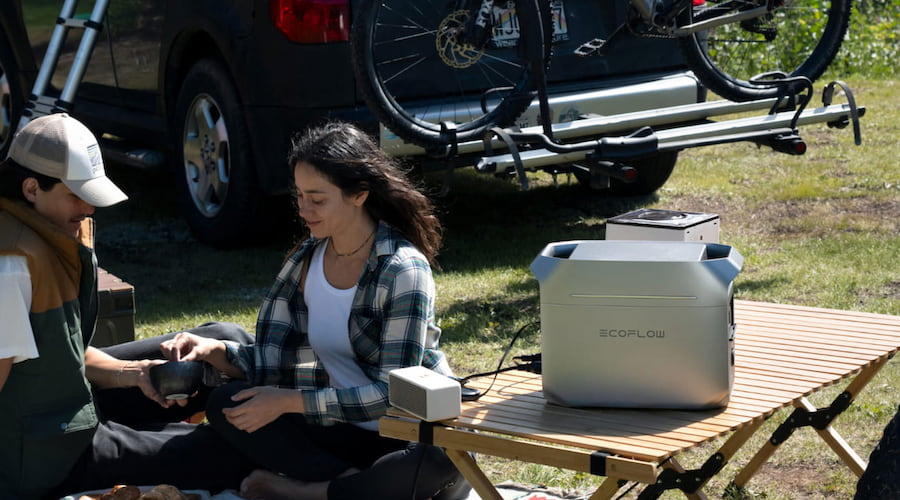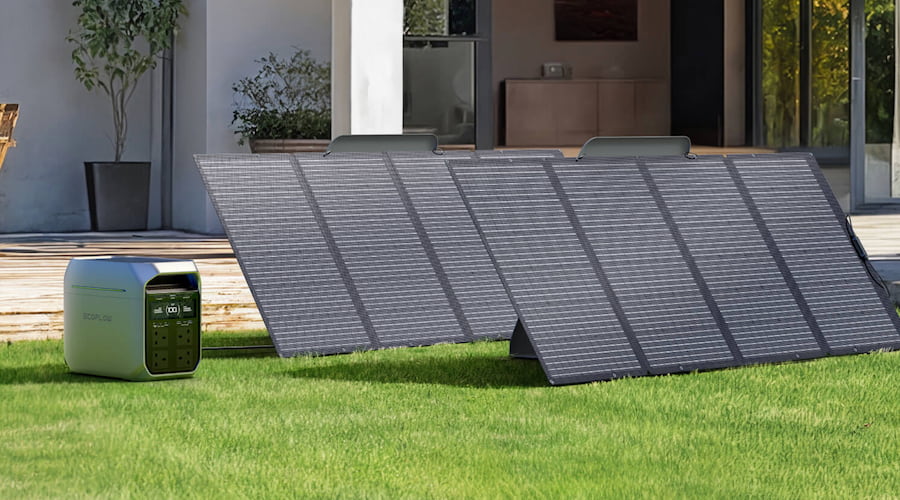Watts to Amps Conversion Explained: Formulas, Charts, and Examples
Need to convert watts to amps? Whether you’re setting up a new workspace at home, trying not to trip a fuse, or just making sense of electrical ratings, understanding how watts and amps relate to each other can really help.
This guide breaks down exactly what watts and amps are, how to change watts to amps, and when it actually matters. We’ll walk you through simple formulas for different types of electrical systems—DC, single-phase, and three-phase AC—and throw in a handy conversion chart and real-life examples to make things crystal clear.
What Are Amps and Watts?
Before you can convert W to amps, it helps to understand the three most basic concepts in any electrical system—volts, amps, and watts:
Volts (V): Volts (short for voltage) measure the electrical pressure in a circuit—basically, how strongly the electricity is being pushed through the wires. Think of it like water flowing through a pipe: the higher the voltage, the more pressure there is pushing the electrical current along. In the UK, the standard mains voltage is 230 volts.
Amps (A): Amps (short for amperes) measure the flow of electric current—or how much electricity is actually moving through the wires. Sticking with the water pipe example, amps would be like the amount of water flowing.
Watts (W): Watts (short for wattage) measure power—how much electrical energy is being used or produced every second. It’s the end result of volts and amps working together.
These three are all connected by a basic formula:
Watts = Volts × Amps
This is the formula you use to convert volts to watts—and it’s also the key to converting watts into amps, which we’ll dive into next.
How to Convert Watts to Amps?
When you ask, “how do I convert watts to amps?” the calculator formula you use depends on the type of electrical system—DC, AC single-phase, or AC three-phase.
All conversions are based on this simple wattage into amps formula:
Amps = Watts ÷ Volts
However, when you’re dealing with AC systems, especially three-phase power, there’s a bit more to it. Let’s break it down:
DC Watts to Amps Calculation Formula
In a DC (direct current) circuit, the watts into amps conversion is straightforward:
Amps = Watts ÷ Volts
For example, if you have a 120-watt device running on a 12-volt DC power supply:
Amps = 120W ÷ 12V = 10A
DC circuits are common in batteries, solar panels, and many electronic devices. Just divide the power in watts by the voltage to find the current in amps.
AC Single Phase Watts to Amps Calculation Formula
Most UK households use single-phase AC (alternating current) power, usually at 230 volts. But with AC power, there’s a small extra factor to include: the power factor (PF). This measures how efficiently the power is used, and it typically ranges from 0.8 to 1 for most appliances.
So, how to figure out amps from watts in a single-phase AC power system? The formula is:
Amps = Watts ÷ (Volts × Power Factor)
Let’s say you have a 1,000W appliance running on the 230V single-phase home AC supply with a power factor of 0.9:
Amps = 1,000W ÷ (230V × 0.9) ≈ 4.83A
You’ll often find the power factor in appliance manuals, especially for motors and older equipment.
AC Three Phase Watts to Amps Calculation Formula
Three-phase power is usually used in industrial settings or large commercial buildings. The calculation formula is slightly more complex and differs based on whether you’re using line-to-line voltage (VL-L) or line-to-neutral voltage (VL-N).
Here’s how to work out amperage from watts in three-phase AC power systems:
Using Line-to-Line Voltage (VL-L)
This is the most common setup in three-phase systems. The formula is:
Amps = Watts ÷ (√3 × VL-L× Power Factor)
Or
Amps = Watts ÷ (1.732 × VL-L× Power Factor)
Let’s say you have a 9,000W machine, running on 400V line-to-line voltage (common in the UK), with a power factor of 0.85:
Amps = 9000 ÷ (1.732 × 400 × 0.85) ≈ 15.34A
Using Line-to-Neutral Voltage (VL-N)
This is less common but still used in some systems where a neutral wire is present. The formula here drops the √3 multiplier:
Amps = Watts ÷ (3 × VL-N × Power Factor)
If the same 9000W load is supplied using 230V line-to-neutral voltage and a power factor of 0.85:
Amps = 9000 ÷ (3 × 230 × 0.85) ≈ 15.36A
As you can see, the result is similar—but the formula is different depending on how the voltage is measured.
Watts to Amps Conversion Chart
Sometimes, you just want a quick answer without doing the maths—and that’s where a conversion chart comes in handy. Below is a simple watts to amps chart based on standard home 230V single-phase AC:
| Power (Watts) | Current (Amps) @ 230V |
|---|---|
| 50 W | 0.22 A |
| 100 W | 0.43 A |
| 200 W | 0.87 A |
| 300 W | 1.30 A |
| 400 W | 1.74 A |
| 500 W | 2.17 A |
| 600 W | 2.61 A |
| 700 W | 3.04 A |
| 800 W | 3.48 A |
| 900 W | 3.91 A |
| 1,000 W | 4.35 A |
| 1,500 W | 6.52 A |
| 2,000 W | 8.70 A |
| 2,500 W | 10.87 A |
| 3,000 W | 13.04 A |
| 3,500 W | 15.22 A |
| 4,000 W | 17.39 A |
| 4,500 W | 19.57 A |
| 5,000 W | 21.74 A |
hese values assume a power factor of 1 (which is typical for resistive loads like heaters and incandescent bulbs). For appliances with motors or electronic components (like refrigerators or computers), the actual current may be slightly higher due to a lower power factor.
Here’s a general Power Factor Chart you can refer to:
| Appliance Type | Typical Power Factor (PF) |
|---|---|
| Electric heater, kettle, oven | 1.0 (Resistive load) |
| Incandescent light bulb | 1.0 |
| LED light bulb (with driver) | 0.9 – 0.95 |
| Washing machine | 0.7 – 0.9 |
| Fridge/freezer | 0.65 – 0.85 |
| Air conditioner | 0.6 – 0.85 |
| Desktop computer, monitor | 0.6 – 0.9 |
| Microwave oven | 0.8 – 0.95 |
| Vacuum cleaner | 0.6 – 0.85 |
| Fluorescent lights (older types) | 0.5 – 0.8 |
| Power tools (drills, saws, etc.) | 0.6 – 0.9 |
Practical Examples of Watts to Amps Conversion
To really help things click, here are a few common real-life scenarios to show how converting watts to amps works in practice:
Electric Kettle
Most kettles are rated around 3,000W and run on 230V home single-phase AC.
Amps = 3000 ÷ 230 = ~13.04A
That’s almost exactly the maximum current for a standard 13-amp plug! No wonder kettles often have their own socket or circuit.
Washing Machine
Say your washing machine uses 2,200W with a power factor of 0.85:
Amps = 2200 ÷ (230 × 0.85) ≈ 11.3A
This is still safe on a regular 13A socket, but you can see how power factor affects the current—if the PF was 1, it would only be about 9.6A.
Home Office Setup (Computer + Monitor + Printer)
Desktop computer: 400W (PF 0.9)
Monitor: 100W (PF 0.95)
Printer: 250W (PF 0.85)
Total load = 750WAverage PF ≈ 0.9
Amps = 750 ÷ (230 × 0.9) ≈ 3.62A
This setup is well within safe limits for a single socket but helpful to check if you’re using a multi-socket extension.
Portable Power Station
Let’s say you’re using the EcoFlow DELTA 3 series portable power station while camping or during a power cut at home. It delivers up to 1800W of output (with a massive 3600W surge capacity for high-demand appliances) and has a 1024Wh battery capacity.
If you plug in a 500W appliance, here’s how much current it would draw from the AC outlets (UK standard 230V):
Amps = 500 ÷ 230 = ~2.17A
That’s well within the portable power station’s limits—and with 11 integrated outlets, you can power multiple devices at the same time, even in a small tent or caravan. Plus, thanks to its compact design and 30 dB ultra-quiet operation, it won’t disturb your peace and quiet.


Pair your DELTA 3 Series with EcoFlow solar panels, and you’ve got a smart solar generator.
The DELTA 3 Plus, with dual 500W MPPT inputs (1,000W total), can fully recharge in just 70 minutes. That’s quick enough to recharge during your lunch break when camping or off-grid.
The standard DELTA 3 with a single 500W MPPT input recharges in around 2 hours from the sun.


This kind of power means you can run essentials like fridges, lights, laptops, or even a kettle—anywhere. And with the EcoFlow ecosystem, everything’s portable, smart, and easy to manage, whether you’re in the garden or completely off-grid.
Common Mistakes When Converting Watts to Amps
Even though the formula is simple, it’s easy to slip up when converting watts to amps. Here are a few of the most common mistakes people make—and how to avoid them:
1. Ignoring the Power Factor (PF)
Many people use the basic formula Amps = Watts ÷ Volts, which is fine only if the power factor is 1 (like with a heater or kettle). But most appliances, especially those with motors or electronics, have a PF between 0.6 and 0.95.
2. Using the Wrong Voltage
In the UK, the standard household voltage is 230V, but some people still assume it’s 240V out of habit, or 120V from looking at US-based resources.
3. Confusing Watts with Kilowatts
1 kilowatt (kW) = 1,000 watts. Forgetting this can result in underestimating current by a factor of 10.
4. Not Allowing Headroom
If you calculate a current of, say, 12.8A for an appliance, that’s technically under the 13A limit—but only just. Using the socket at full load over time can lead to overheating.
Try to keep total loads under 80–90% of a socket or circuit rating when possible, especially for long periods.
Conclusion
Once you get your head around how watts and amps work together, it all starts to make sense—and becomes pretty useful too. Whether you’re figuring out if your circuit can handle your average house energy usage or double-checking the appliance ratings you’re using on an extension lead, knowing how to convert watts to amps gives you the confidence to make smarter, safer choices. Keep this guide bookmarked—it’s a handy reference to come back to any time you need a quick reminder.
FAQs
How many watts in 1 amp?
To figure out how many watts is in an amp, you need to know the voltage. The basic formula is: Watts = Amps × Volts
So, if you have 1 amp of current:
On a 230V household AC circuit, that’s: 1 amp × 230 volts = 230 watts
On a 12V DC system (like from a battery): 1 amp × 12 volts = 12 watts
Why is it important to convert watts to amps correctly?
Converting watts to amps accurately helps prevent overloading sockets or circuits, which can lead to tripped breakers, equipment damage, or fire risks. It also ensures you choose the right power setup and use energy safely and efficiently, especially in off-grid or portable situations.
Can the watts-to-amps conversion differ in AC and DC circuits?
Yes, the conversion differs slightly. In DC circuits, it’s straightforward: Amps = Watts ÷ Volts. In AC circuits, especially with appliances that have motors or electronics, you also need to include the power factor (PF): Amps = Watts ÷ (Volts × Power Factor).